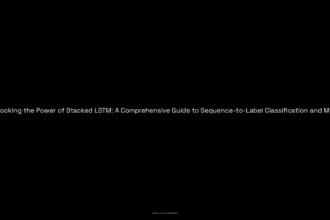Outsmarting and bypassing AI content detection involves a strategic blend of original writing, AI-assisted rewriting, human-like editing, and the use of specialized tools designed to make generated text appear authentic and undetectable by AI detectors. This approach prevents the stereotypical markers that AI detection systems look for, such as repetitive phrasing, overly polished grammar, and unnatural stylistic patterns, thus creating text that passes as human-written.
To do AI content detectors effectively, start by producing original content yourself. Writing your own essays, articles, or reports creates a foundation less likely to be flagged. Then, employ AI rewriting strategically. Instruct AI tools to rewrite your text using detailed prompts focused on human-style writing with variability in tone, sentence length, and phrasing.
Some effective prompts include asking AI to rewrite text with:
- a conversational or academic tone
- natural imperfections like questions, pauses, or mild contradictions
- personal anecdotes or relatable imagery
- dynamic sentence structures blending short and longer sentences
This method generates text with natural patterns that confuse probability models AI detectors depend on.
Advanced rewriting tools like WordAi, Quillbot, and Rewritify AI also “humanize” machine-generated content. They adjust phrasing and sentence flow to resemble human thinking more closely. Tools such as undetectable.ai, myhumanizer.com, and Hastewire provide additional layers of humanization by mimicking diverse writing styles.
Using a multiphase process speeds detection avoidance:
- Write fresh content yourself.
- Run it through AI for professional rewriting with explicit human-style prompts.
- Ask AI to detect which parts sound “AI-like” and get editing suggestions.
- Manually revise these flagged parts to ensure naturalness.
- Optionally pass through paraphrasing or humanizing tools again.
- Repeat until AI detectors—like GPTZero or Writer.com—classify the text as human-generated.
This iterative human-in-the-loop method beats fully automated humanizers and ensures your personal voice remains intact while removing typical AI traces.
For example, ChatGPT can self-analyze. Submit your draft and request it to identify and suggest improvements for robotic or repetitive phrasing. Then, implement those changes yourself or have ChatGPT assist with rewriting until the tone matches human nuances. This method is faster than fully manual rewriting and more reliable than blindly trusting automatic humanizers.
Another useful trick is manual paraphrasing via translation: translate AI output into your native language using your own wording, then back to English with your unique phrasing. This breaks AI detection patterns without exhaustive rewriting.
Several quick practical fixes help too. Replacing “and” with “&” or capitalizing all “i”s to look like “l”s can slightly reduce detection signals. Writing in the style of a known human author can fool some detectors because it introduces distinctive linguistic fingerprints AI usually lacks.
On the detection side, be aware that AI detectors update constantly. A method successful one day might fail the next. For instance, GPTZero’s recent updates have neutralized many passing tricks. Also, some professors identify AI use through content inconsistencies rather than detectors. So, bypassing AI detection requires vigilance and multiple techniques.
Using AI adversarially to outsmart detectors represents a growing frontier. This involves training AI models via adversarial techniques to produce text inherently resistant to detection algorithms. While complex, this approach foreshadows future methods to evade AI content identification.
Some users pair AI models—for example, generating content with ChatGPT, then humanizing it with Snapchat AI before testing it on undetectable.ai—to fine-tune outputs iteratively until fully undetected.
Here is a concise table summarizing key tools and strategies:
| Tool/Method | Description | Use Case |
|---|---|---|
| ChatGPT (with detailed prompts) | Rewrite content emphasizing human tone, style, and variability | Produces natural-sounding rewrites; initial rewriting and fine-tuning |
| Quillbot, WordAi, Rewritify AI | Paraphrase and humanize AI or original text | Speed up humanization; improve readability and originality |
| undetectable.ai, Hastewire, myhumanizer.com | Humanizer tools that adjust style and phrasing | Final layer to fool detectors like Turnitin, GPTZero |
| AI proofreading & self-editing | Use AI to identify AI-like text and suggest improvements | Manual intervention informed by AI feedback; improves authenticity |
| Translation paraphrasing | Translate AI content to native language and back with custom phrasing | Manual paraphrasing that disrupts AI detection patterns |
Following these steps creates content that blends human unpredictability with polished readability yet avoids AI detection. It relies on manual input supported by AI tools, rather than fully automated work, which remains more vulnerable.
The most effective approach today is not to avoid detection by sheer obfuscation but to embed your own voice with AI’s aid. Write originals, edit with AI feedback, and humanize iteratively. This ensures authenticity, better content quality, and sustained evasion from detection algorithms.
- Create original drafts yourself before AI rewriting.
- Use AI with specific prompts demanding human-like style and variability.
- Run AI-analysis and perform guided self-edits to fix robotic elements.
- Leverage paraphrasing tools and humanizers as supplementary aids.
- Repeat refinement until AI detectors label text as human-written.
- Remain aware that detection tools evolve, so stay adaptable.
What are some effective tools to bypass AI content detectors?
Cleverspinner and Originality help polish grammar after text transformation. Tools like WordAi and Quillbot humanize AI text. Undetectable.ai matches writing style to pass detectors reliably.
How can rewriting original content improve AI detection bypass?
Writing your own content then asking AI to rewrite it adds natural style. For example, making it more professional or editing grammar can lead classifiers to mark it as human-written.
What writing strategies reduce AI detection rates?
- Vary sentence structures and length
- Mix casual and formal tones
- Avoid repetitive patterns and overused words
- Add human elements like questions or personal anecdotes
How can detailed AI prompts help create human-like text?
Use prompts that specify tone, style, or emotion. Request writing with anecdotes, pauses, or relatable metaphors. This diversity tricks AI detectors by mimicking real writing habits.
How to use AI to fix AI-like text sections?
Ask ChatGPT to identify parts that sound robotic or over-polished. Edit those suggestions manually and reprocess the text. This back-and-forth reduces detection risk effectively without extra tools.





